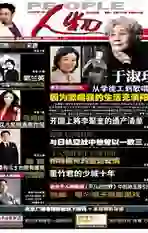Economy
2016-05-17
China Sets Energy Use Targets for 2016
China aims to keep total energy consumption at around 4.34 billion tons of standard coal equivalent in 2016, with nonfossil fuel and gas consumption rising to 13 percent and 6.3 percent, respectively, according to a guideline issued by the National Energy Administration in early April. The proportion of coal consumption will fall below 63 percent, the guideline said.
On the supply side, China is expected to produce 3.6 billion tons of standard coal equivalent this year, with coal production around 3.65 billion tons, crude oil output reaching 200 million tons, and gas output standing at 144 billion cubic meters.
The country aims to reduce energy consumption per unit of gross domestic production by at least 3.4 percent year-on-year in 2016, according to the guideline.
The administration called for efforts to promote clean energy and emission reductions, further optimize the countrys energy structure, and strengthen international energy cooperation.
China plans to invest RMB 30 billion(about US $4.6 billion) in the construction of charging infrastructure in 2016 to promote the use of electric vehicles, the guideline said. The country will build 2,000 charging stations, 100,000 decentralized public charging posts and 860,000 private charging posts in 2016.
Moreover, China will launch a new round of electric power grid upgrade in the countryside to improve rural residents well-being, the guideline said.
Chinas energy consumption rose 0.9 percent year-on-year to 4.3 billion tons of standard coal equivalent in 2015.
Measures Taken to Maintain Magnetism for Foreign Investment
China is confident it will remain an attractive destination for foreign investment despite new challenges, said Shen Danyang, a spokesman with the Ministry of Commerce(MOC) in March.
Shen stated that this confidence comes from the existing foundation and new efforts that will be made to attract foreign investment.
The amount of foreign capital utilized stood at US $135.6 billion in 2015, up 5.5 percent year-on-year, outperforming other developing countries for the 24th straight year. China actually used RMB 141.88 billion in foreign capital in the first two months of this year, up 2.7 percent year-on-year, according to the MOC.
The country is facing challenges in attracting foreign investment due to rising costs of production factors, such as labor, and increasing competition from other countries, but research by global institutions and foreign chambers of commerce is mostly upbeat about Chinas investment outlook, Shen said.
The Chinese government will strive to make the domestic market fairer and more transparent and predictable by further relaxing restrictions on foreign investment in the service sector.
China Implements New Online Import Tax Rules
China implements new tax rules on online retail goods from April 8 to provide a fairer environment for e-commerce platforms and traditional retailers and importers. Retail goods purchased online will no longer be classed as “parcels,” which enjoy a “parcel tax” rate, lower than that on other imported goods. Instead, online purchases from overseas will be charged in the same way as any other imported goods, according to the Ministry of Finance (MOF).
“A parcel tax is not for trade purposes, which is exactly what online retailing is. It is unfair to conventional importers and domestic producers,” explained Zhang Bin, a researcher with the Chinese Academy of Social Sciences.
China levied parcel taxes on imported goods worth less than RMB 1,000 (US $150) at a rate of mostly 10 percent. Goods under RMB 50 were tax-exempt. As demand for overseas goods grows, online purchasing agents have taken advantage of the parcel tax and used methods such as repackaging and mailing products separately to avoid tax.
The new policy only allows a maximum of RMB 2,000 per single cross-border transaction and a maximum of RMB 20,000 per person per year. Goods that exceed these limits will be levied the full tax for general trade, the MOF said.
The new policy will speed up customs clearance so consumers will receive most orders from overseas within two weeks, instead of the current two months.
Cross-border e-commerce has boomed in China in recent years. The Ministry of Commerce has predicted that the volume of crossborder e-commerce in 2016 will reach RMB 6.5 trillion and will soon account for 20 percent of Chinas foreign trade.
Chinas Rising Status in Global Innovation: WIPO
China has continued to perform strongly in international patent and trademark filings against the backdrop of a moderate surge in worldwide intellectual property (IP) filing, according to a recent report released by the World Intellectual Property Organization(WIPO).
The WIPO issued the report in mid-March from its headquarters in Geneva in order to analyze the volume of global IP applications in 2015, including patents, trademarks and industrial designs.
Data show that the number of Chinas Patent Cooperation Treaty (PCT) applications hit 29,846 in 2015 – an increase of 16.8 percent over the previous year, ranking third in the globe for three consecutive years after the United States and Japan.
The three companies that filed the highest number of PCT applications in 2015 were Chinas Huawei, followed by U.S.-based Qualcomm, and Chinas ZTE Corp.
“China has enjoyed rising status in global innovation with its improved innovation ability and enhanced awareness of IP,” said Chen Hongbing, director of the WIPO office in China.
The report revealed that, with 2,401 applications last year, China scored the best performance in the filing of international trademark applications under the Madrid System since it became a member of the system in 1989. The country is in seventh place among all filers.
“We see through these indicators that Chinese enterprises are picking up the pace of their overseas business operations. They are building international brands in an effort to improve their competitive standing in the global market,” Chen said.
The WIPO expects Chinas technologies, products and services to benefit the world through the implementation of the Belt and Road Initiative and international production capacity cooperation, and is willing to use their innovation resources to better serve Chinas enterprises in their transformation and implementation of the going global strategy, Chen said.
